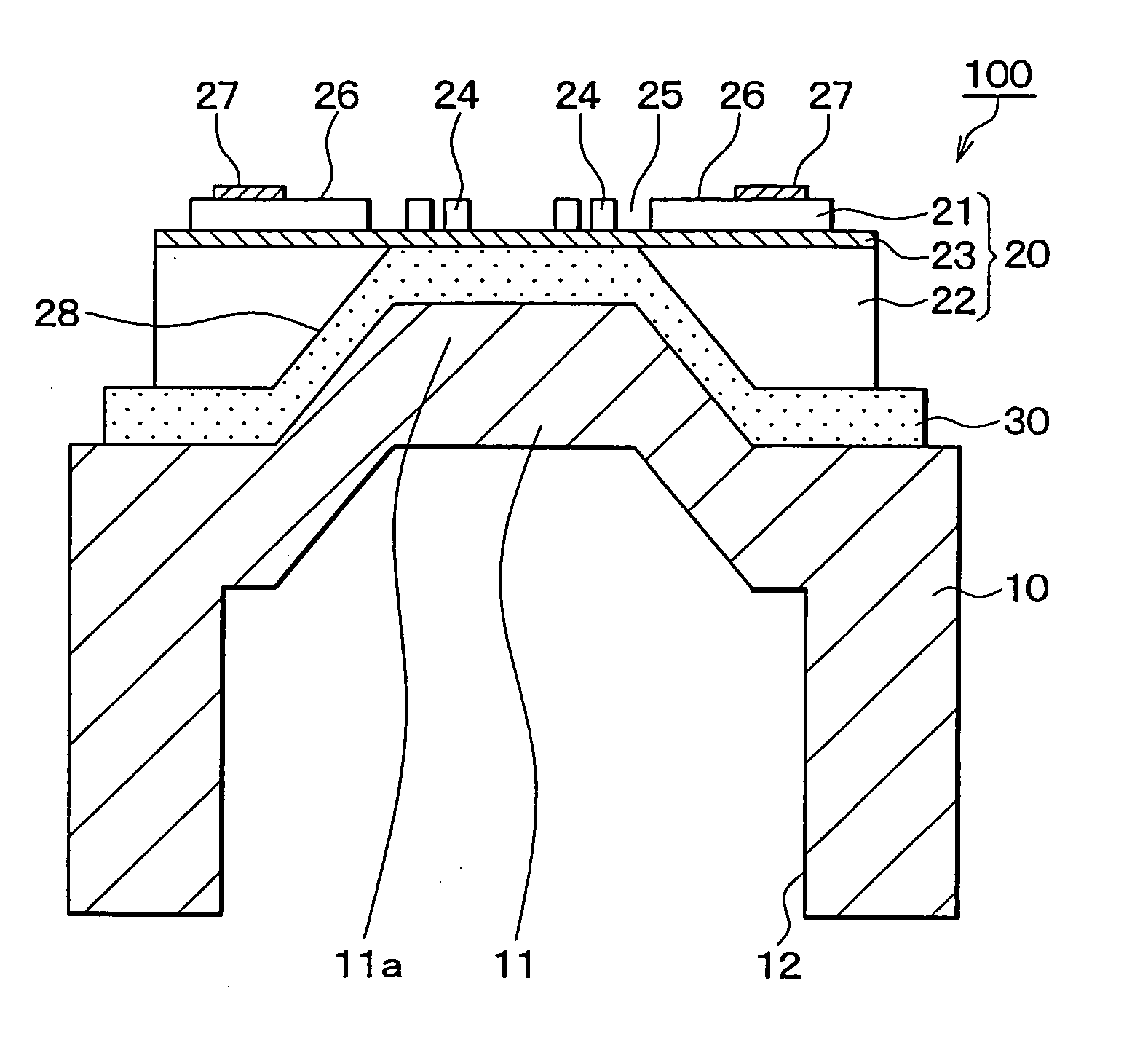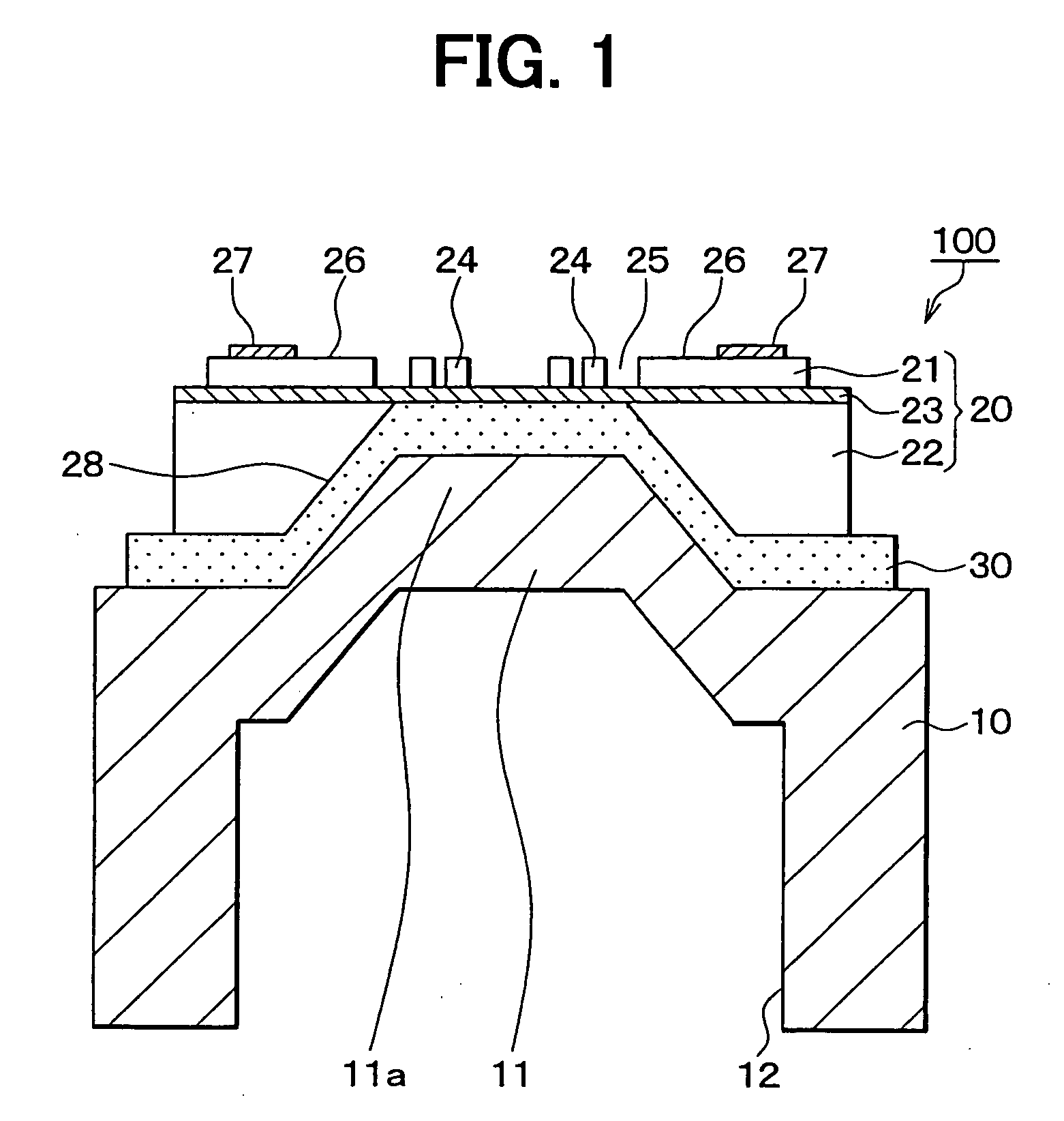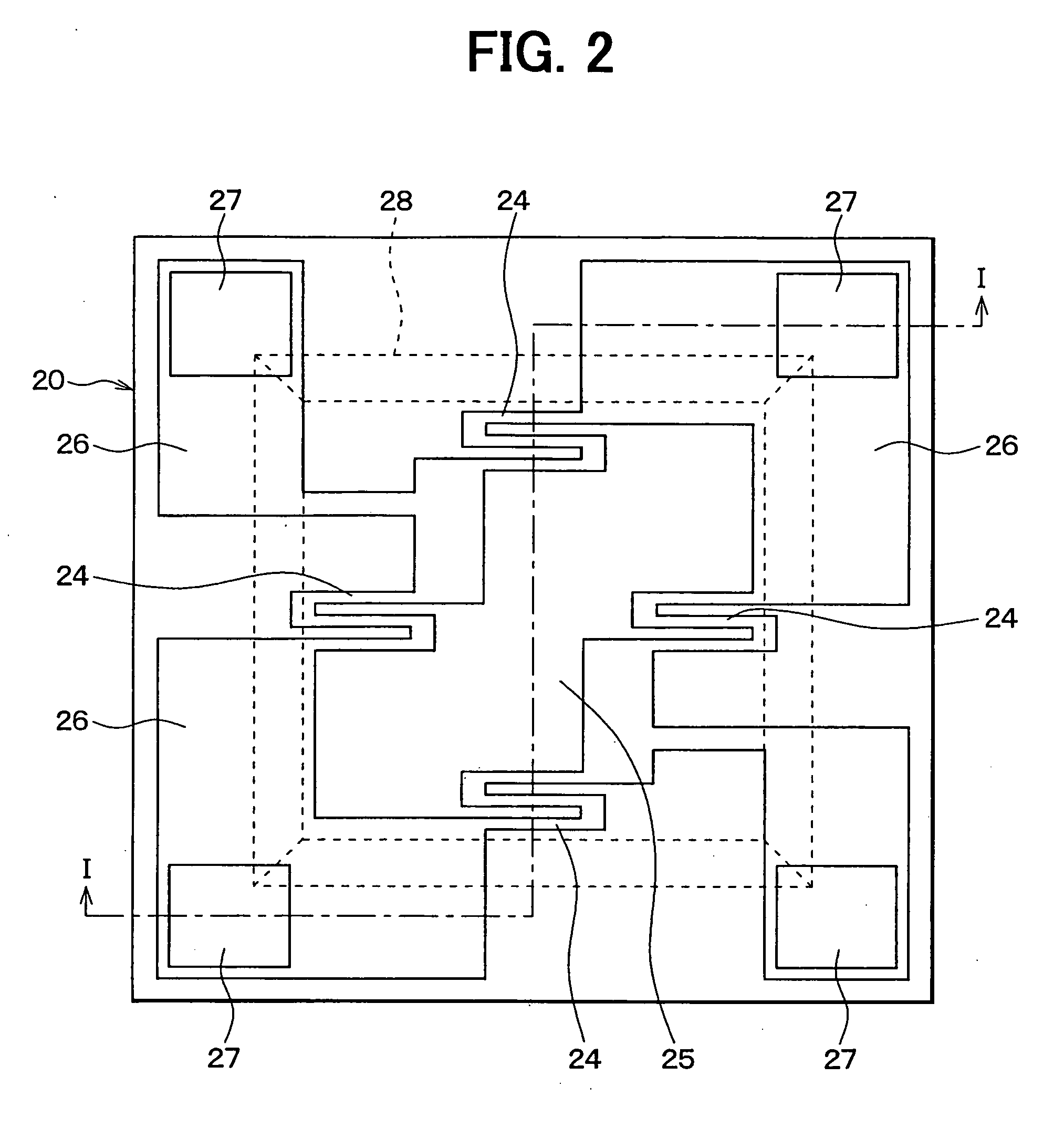Pressure sensor
a pressure sensor and sensor technology, applied in the field of pressure sensors, can solve the problems of difficult to accurately detect pressure in a high temperature environment, greatly deteriorated etc., and achieve the effect of improving the strength of semiconductor substrates and simple pressure sensors
- Summary
- Abstract
- Description
- Claims
- Application Information
AI Technical Summary
Benefits of technology
Problems solved by technology
Method used
Image
Examples
first embodiment
[0020]FIG. 1 shows a pressure sensor 100 and is a sectional view corresponding to a section taken along I-I in FIG. 2. As an example, the pressure sensor 100 can be attached to a subject device, for example, a fuel pipe in a vehicle injection system (e.g., common rail). In this case, the pressure sensor 100 detects the pressure of a liquid fuel or a gas-liquid mixing fuel in the fuel pipe, as a pressure medium.
[0021] The pressure sensor 100 includes a metal stem 10 having a diaphragm 11 for a pressure detection, a semiconductor substrate 20 attached to a surface of the diaphragm 11 in the metal stem 10, and strain gauges 24 for converting a bending (deformation) of the diaphragm 11 to an electrical signal.
[0022] The metal stem 10 is made of a Fe—Ni—Co alloy having a small coefficient of thermal expansion, for example. The metal stem 10 is formed into a hollow cylinder having a closed end portion as shown in FIG. 1. The metal stem 10 has the diaphragm 11 formed as a thin wall secti...
second embodiment
[0055] The second embodiment of the present invention will be now described with reference to FIG. 4. In the second embodiment, as shown in FIG. 4, an outer diameter of the diaphragm 11 in the metal stem 10 is made smaller than a diameter of the bottom portion of the recess portion 28.
[0056] As an example, the whole outer diameter of the metal stem 10 can be made smaller than the diameter of the bottom portion (the insulation layer 23) of the recess portion 28 of the semiconductor substrate 20 as shown in FIG. 4. In this case, all the diaphragm 11 is inserted into the recess portion 28, and is readily attached to the insulation layer 23.
[0057] According to the second embodiment, the surface of the diaphragm 11 can be readily attached to the semiconductor substrate 20, and the metal stem 10 can be easily formed because the metal stem 10 has a simple shape.
Other Embodiments
[0058] Although the present invention has been described in connection with some preferred embodiments thereo...
PUM
 Login to View More
Login to View More Abstract
Description
Claims
Application Information
 Login to View More
Login to View More - R&D
- Intellectual Property
- Life Sciences
- Materials
- Tech Scout
- Unparalleled Data Quality
- Higher Quality Content
- 60% Fewer Hallucinations
Browse by: Latest US Patents, China's latest patents, Technical Efficacy Thesaurus, Application Domain, Technology Topic, Popular Technical Reports.
© 2025 PatSnap. All rights reserved.Legal|Privacy policy|Modern Slavery Act Transparency Statement|Sitemap|About US| Contact US: help@patsnap.com



